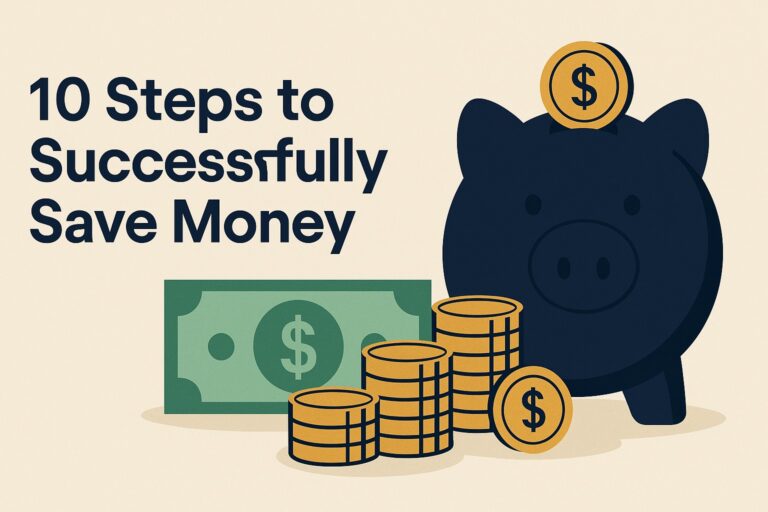Anúncios
Building a strong credit score early in life can open doors to better financial opportunities, from qualifying for lower interest rates to securing rental agreements with ease. For young adults, understanding how to improve credit quickly can provide a solid foundation for long-term financial success.
While improving your credit score takes consistent effort, certain strategies can deliver results faster than you might expect. By focusing on key factors that influence your score, you can start seeing changes in just a few months.
Anúncios
In this guide, we’ll break down proven, professional strategies in a simple step-by-step format, helping you take control of your financial profile. Follow along to discover how you can move your score in the right direction starting today.
Step 1: Understand How Credit Scores Work
Before you can improve your credit score, you need to understand what influences it. In the United States, the most commonly used scoring model is the FICO® Score, which ranges from 300 to 850. This score is calculated based on five key factors:
Anúncios
- Payment history (35%) – Whether you pay bills on time.
- Credit utilization (30%) – The percentage of available credit you’re using.
- Length of credit history (15%) – How long your accounts have been open.
- Credit mix (10%) – The variety of credit accounts you have.
- New credit (10%) – Recent credit inquiries and new accounts.
Understanding these components will help you focus your efforts where they matter most. For example, paying bills on time has more impact than opening a new type of account.
Step 2: Check Your Current Credit Report
You can’t improve what you don’t measure. The first practical step is to review your credit report to see where you currently stand. By law, you are entitled to one free report per year from each of the three major credit bureaus—Experian, Equifax, and TransUnion—via AnnualCreditReport.com.
Look for:
- Any missed payments
- High balances relative to your limits
- Accounts you don’t recognize
- Errors in personal information
Identifying and addressing mistakes can give your score an immediate boost once corrected.
Step 3: Pay Bills on Time
Your payment history is the single most important factor in your credit score. Just one missed payment can drop your score by 50–100 points, depending on your current standing. To ensure you never miss a due date:
- Set up automatic payments for at least the minimum amount due.
- Use calendar reminders or budgeting apps.
- If you’re struggling financially, contact creditors before payments are late to discuss hardship programs.
Consistency is key—every on-time payment builds a positive track record.
Step 4: Reduce Credit Utilization Ratio
Credit utilization is the second most influential factor in your score. It refers to the percentage of your available credit that you’re currently using. Aim to keep it below 30%, and ideally under 10% for faster improvements.
To lower your utilization quickly:
- Pay down existing balances.
- Request a higher credit limit (but avoid new spending).
- Spread purchases across multiple cards instead of maxing one out.
For example, if your limit is $1,000 and your balance is $900, your utilization is 90%, which is harmful to your score. Reducing that balance to $100 would significantly improve it.
Step 5: Avoid Opening Too Many Accounts
Every time you apply for credit, a hard inquiry appears on your report, which can temporarily lower your score. Opening multiple new accounts in a short period can also signal risk to lenders.
Instead:
- Only apply for credit when necessary.
- Space out applications by at least six months.
- Focus on improving existing accounts before seeking new ones.
Young adults should especially avoid chasing every store credit card offer, as these can add inquiries without providing long-term benefits.
Step 6: Keep Old Accounts Open
The length of your credit history contributes to your score, so closing old accounts can unintentionally hurt it. Even if you’re not actively using a card, keeping it open maintains your account age and adds to your total available credit, which helps your utilization ratio.
Exceptions to this rule include:
- Cards with high annual fees that outweigh the benefits.
- Accounts linked to negative history you can’t resolve.
When in doubt, consult with a credit counselor before closing any account.
Step 7: Dispute Errors on Your Credit Report
Errors on credit reports are more common than you might think, and fixing them can quickly improve your score. If you find inaccuracies—like accounts that don’t belong to you or incorrect payment statuses—you can dispute them with the credit bureau.
Steps to dispute:
- Gather documentation (statements, receipts, letters).
- File disputes online at the bureau’s website.
- Follow up within 30 days for resolution.
Corrected errors can raise your score almost immediately after updates are made.
Step 8: Use Credit-Building Tools
If you have a limited credit history, certain tools can help you build it faster:
- Secured credit cards – Require a refundable deposit and report to credit bureaus.
- Credit-builder loans – Offered by some banks and credit unions; payments build history.
- Authorized user status – Being added to a trusted person’s account can boost your profile.
These options are particularly useful for young adults starting from scratch.
Step 9: Monitor Your Progress
Regular monitoring ensures you catch changes—positive or negative—early. Use services like Credit Karma, Experian, or your bank’s built-in credit tracking tools to:
- Track score changes
- Get alerts for new inquiries or accounts
- Receive personalized improvement tips
Monitoring also reinforces positive habits by showing tangible progress.
Step 10: Practice Long-Term Credit Habits
While this guide focuses on fast improvements, the ultimate goal is sustainable financial health. Good long-term habits include:
- Paying all bills on time, every time.
- Keeping balances low relative to limits.
- Reviewing your credit report annually.
- Using credit strategically, not impulsively.
A consistent approach will not only improve your score but also keep it strong for future goals like buying a home or starting a business.
Conclusion
Improving your credit score fast is possible when you understand how the system works and take targeted action. For young adults, these early years are the perfect time to establish strong credit habits that will serve you for decades. Start small, stay consistent, and watch your financial opportunities expand.
FAQs
1. How quickly can my credit score improve?
It depends on your starting point and actions taken. Some see improvements in as little as 30–60 days.
2. Will checking my own credit score lower it?
No. Personal checks are considered soft inquiries and don’t affect your score.
3. Is paying off all my debt the fastest way to raise my score?
It can help significantly, especially if it reduces your utilization, but other factors also matter.
4. Should I close unused credit cards?
Not unless they have high fees or other drawbacks, as closing them can shorten credit history and raise utilization.
5. Can becoming an authorized user really help?
Yes—if the primary account holder has good payment history and low utilization, it can positively impact your score.



